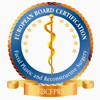Facial reconstruction surgery is considered one of the most delicate and significant areas of medical aesthetics and surgery. It plays a vital role in treating aesthetic and functional problems in the facial region caused by congenital deformities, accidents, burns, tissue loss after cancer, or trauma. This surgical procedure not only corrects physical appearance but also aims to restore vital functions such as breathing, speaking, and chewing. For detailed information about this highly precise procedure, you can check out our content. We wish you all a pleasant read and a good day.
What is Facial Reconstruction Surgery?
Facial reconstruction surgery is a branch of surgery performed to correct deformities in facial structures caused by congenital abnormalities, trauma, tissue loss after cancer surgery, or aesthetic and functional problems. This surgery aims not only to improve the appearance aesthetically but also to restore vital functions of the face, such as breathing, chewing, and speaking. Reconstruction procedures can be performed on different areas of the face, such as the nose, jaw, cheeks, lips, eyelids, and ears. Thus, the surgery plan is personalized according to the patient's needs and usually includes tissue transfers, implants, or microsurgical techniques. As a result, the patient's quality of life improves, and adaptation to social life becomes easier.
Why Do People Need Facial Plastic Surgery?
Everyone desires a life where they can comfortably socialize and spend time in their social environment. However, sometimes things do not progress as desired. Experiencing facial paralysis, muscle spasms due to congenital or other reasons can disturb a person. With facial reconstruction surgery, procedures can be performed on the forehead, cheeks, around the eyes, eyelids, lips, and eyebrows. Techniques are used based on the size of the area affected by facial paralysis and the activity of the nerves and muscles. Thus, those who want to correct asymmetric facial types and regain lost functions need facial aesthetic surgery. Facial reconstructive surgery is a good treatment method for those who wish to expand their comfort zone.
How Does Facial Reconstruction Surgery Work?
A person who has suffered from facial paralysis for nearly 2 years may have damaged or deteriorated nerves. Since time has passed and the nerves and muscles will not work as desired, intervention is required in the head and neck region. Before this intervention, the doctor examines the extent of nerve damage caused by facial paralysis. Then, the doctor analyzes whether the patient is an ideal candidate for facial plastic and reconstructive surgery and discusses the risks, benefits, and types of surgical intervention.
When surgery is offered as a solution, issues such as a deviated septum, congenital anomalies, facial animation surgery, facial rejuvenation surgery, and nasal obstruction are addressed. Whatever the needs of the facial area in a paralyzed individual, they are corrected through surgery. The face is reconstructed using nerves, muscles, skin, cartilage, and bones taken from the inner thigh or other parts of the body.
Types of Facial Reconstruction Surgery
Facial plastic and reconstructive surgery is applied according to the defects present in the face and neck region. For some individuals, the face is restructured, while for others, facial symmetry or smile symmetry is achieved. The types of facial reconstruction surgery vary depending on the doctor's initial consultation and the patient's complaints. These types include:
- Orbital fracture repair
- Microvascular reconstruction
- Facial trauma
- Lip reconstruction
- Eyelid surgery
- Scar revision
- Reconstruction of the head, neck, and face after cancer surgery
- Ear reconstruction
- Nasal reconstruction
- Facial animation
- Skull base surgery
- Cleft lip and palate repair
- Treatment of facial trauma
Facial Reconstruction Benefits
Facial plastic and reconstructive surgery offers numerous benefits. Considering the functions previously lost, the benefits increase as healing progresses. The benefits of facial reconstructive surgery include:
- Facial animation techniques improve expressions, allowing even subtle facial expressions to be performed easily.
- Facial symmetry is achieved.
- Smile symmetry is restored.
- Eyelids can fully close, preventing partial closure.
- Dry eye and tear duct issues are reduced.
- Speech difficulties or impairments are resolved, enabling clearer communication.
- Chewing functions are restored, eliminating difficulties while eating.
- You won't struggle to smile.
- Muscle spasms are corrected.
- You can communicate effectively.
- Your desire to participate in social life increases.
- Facial, neck, and head symmetry are achieved in the best way possible.
Facial Reconstructive Surgery Procedure
Various procedures can be used in surgical interventions in this field. Facial reconstructive surgery procedures vary according to the patient. Extensive interventions can be made with facial reconstruction surgery depending on the extent of the damage to the face. In addition to surgical interventions for the ears, eyes, neck, head, forehead, and cheeks, aesthetic procedures can also be utilized. These include:
- Scar revision
- Symmetry correction with injections and fillers
- Facial reconstructive surgery
- Eyelid surgery
- Brow lift surgery
- Ear surgery
- Facial paralysis
- Cosmetic procedures for the face and neck
- Rhinoplasty
- Non-surgical facial treatments
- Facial feminization
- Male aesthetic surgery
- Female aesthetic surgery
- Facial animation
- Microvascular free tissue transfer
These procedures not only enhance the face, eyes, forehead, and neck but also balance and correct asymmetry. Each of these procedures is valuable for creating balance and making aesthetic improvements to the face.
Things to Consider Before Facial Reconstruction Surgery
Before deciding on surgery, the doctor conducts a thorough examination. The examination determines which nerves and muscles are damaged or impaired. The doctor assesses how the damaged nerves affect functions like vision, breathing, and eating. They also determine whether it is possible to reactivate the muscles and nerves. If muscle and nerve activity is not possible, the doctor decides on the type of surgical intervention.
Next, if skin, bone, or cartilage will be used during the surgery, the doctor evaluates whether the patient can be a donor or considers implant and prosthesis options. Since the surgery will be performed under general anesthesia, fasting for a certain period will be necessary. If the procedure is minor, local anesthesia may be preferred. The doctor will decide appropriately based on the patient's condition.
Things to Consider After Facial Reconstruction Surgery
To shorten recovery time and ensure the success of the surgery, it is essential to strictly adhere to the doctor's instructions. To achieve full recovery after types of facial reconstruction surgery, consider the following:
- Drains should remain in place for the time specified by the doctor.
- Bandages should not be touched or removed as they need to stay for a certain period.
- Avoid taking a shower for 2 to 3 days after surgery.
- When showering, use lukewarm water and avoid hot water.
- Stay away from activities that increase facial pressure, as swimming does.
- Avoid blood-thinning medications and any drugs the doctor advises against post-surgery.
- If you experience pain, use pain relievers recommended by your doctor.
- Avoid heavy and strenuous activities.
- If there is swelling, discharge, or severe pain at the surgical site, consult your doctor immediately.
- Maintain a healthy diet and avoid salty, spicy, and hot foods.
- Focus on consuming vegetables and fruits and prioritize healthy eating.
Recovery from Facial Reconstruction Surgery
The recovery time for facial reconstruction surgery varies depending on several factors. The patient's age, procedures, and surgical interventions provide insight into the recovery process. The recovery period will be longer as the patient's age increases. In children and young individuals, complete facial healing occurs faster. Additionally, the following factors should be considered regarding facial reconstruction surgery recovery time:
- The extent of nerve and muscle damage under the face
- Whether the patient has other illnesses
- The presence of immune system disorders
- The techniques used by the surgeon
- The surgeon's surgical success
- Genetic factors
- Medications the patient must take
- The scope of the application area
Depending on these variables, the healing of scars after surgery will also vary. Although it is desired for scars to be less visible, some patients may have faint, thin lines. However, if your doctor is highly skilled, they often use the natural folds in the ear. Even if there is a fine scar line, it is not noticeable due to the fold. To shorten the facial reconstruction surgery recovery time, you must follow your doctor's instructions. Healing will be inevitable if you follow the instructions for the care of surgical areas and maintain nutritional health.
FAQ
Is facial reconstruction surgery worth it if you're generally satisfied with the structure and appearance of your face?
Even if you are satisfied with the structure of your face, you may struggle with functions such as vision, breathing, or chewing. While the face may look beautiful, functional losses reduce the quality of life. You may have difficulty speaking and face communication problems. Muscle spasms may occasionally disturb you as well. If you consult your doctor, they will inform you about the benefits and disadvantages of facial reconstructive surgery. It will ultimately be your decision whether to reconstruct your face.
Can Plastic surgery (facial reconstruction) make someone unrecognizable?
If a person has severe facial trauma and needs their face redesigned from scratch, a plastic surgeon can achieve a remarkable appearance. When procedures are performed on the eyes, nose, forehead, lips, cheeks, and neck, the face may become unrecognizable. If you work with highly skilled doctors and the best in the field, you will likely be satisfied with the results of facial reconstruction.
Will there be any scars after facial reconstruction surgery?
The extent of the facial reconstructive procedure provides information about the likelihood of scarring. Most doctors use the natural folds of the ears to avoid visible scars. Since the incision is made along the ear's fold, even if there is a scar, it will not be noticeable. To minimize the chance of scarring, work with the best doctors in the field. These doctors place aesthetic sutures in alignment with the face's natural structure. They also guide you with appropriate post-surgery care and treatments to prevent scarring. The likelihood of scarring depends on the patient's skin type. Even for individuals prone to scarring, it is often a faint, unclear, and thin line. This likelihood is extremely low.














